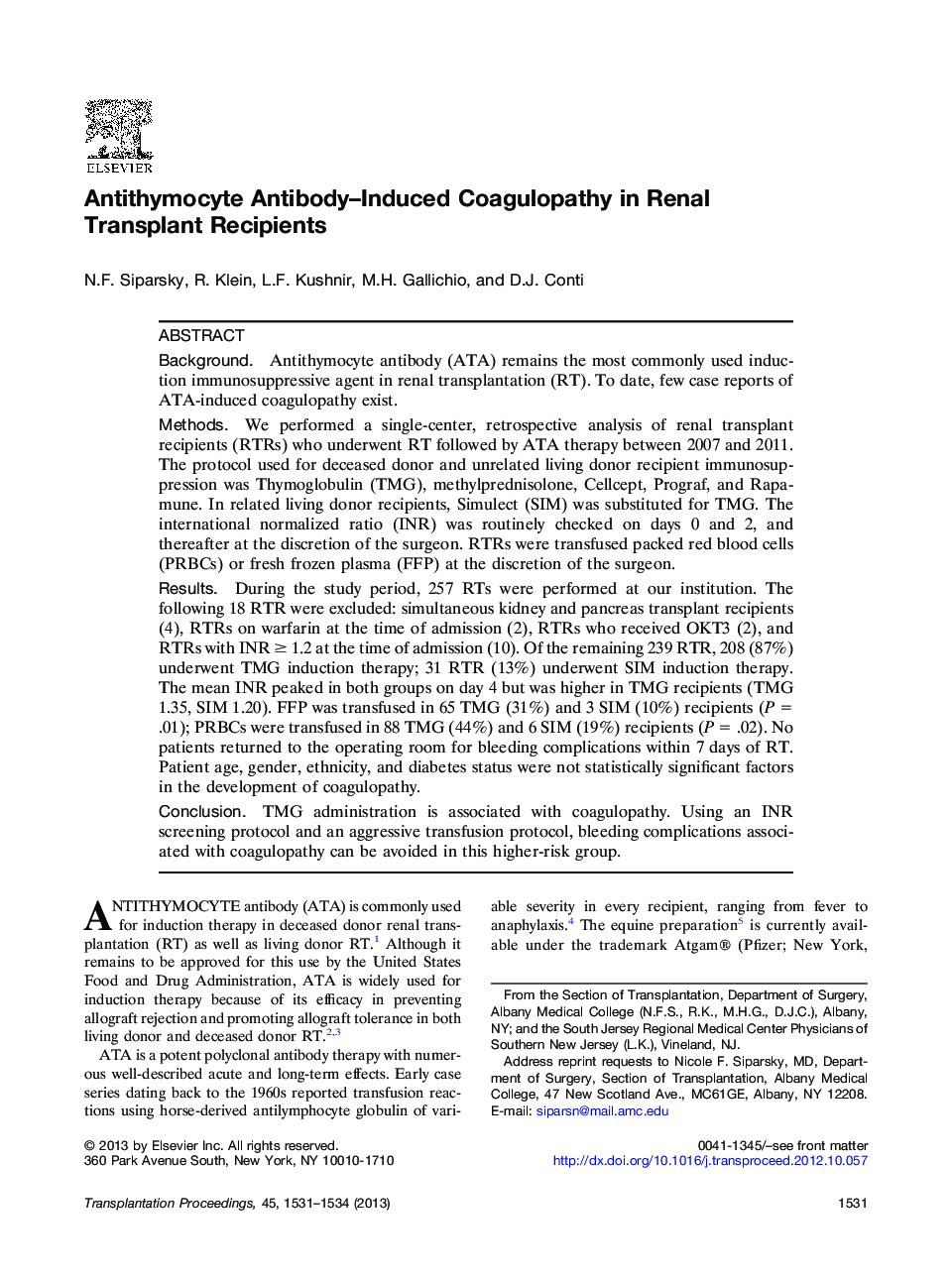| Article ID | Journal | Published Year | Pages | File Type |
|---|---|---|---|---|
| 4257313 | Transplantation Proceedings | 2013 | 4 Pages |
BackgroundAntithymocyte antibody (ATA) remains the most commonly used induction immunosuppressive agent in renal transplantation (RT). To date, few case reports of ATA-induced coagulopathy exist.MethodsWe performed a single-center, retrospective analysis of renal transplant recipients (RTRs) who underwent RT followed by ATA therapy between 2007 and 2011. The protocol used for deceased donor and unrelated living donor recipient immunosuppression was Thymoglobulin (TMG), methylprednisolone, Cellcept, Prograf, and Rapamune. In related living donor recipients, Simulect (SIM) was substituted for TMG. The international normalized ratio (INR) was routinely checked on days 0 and 2, and thereafter at the discretion of the surgeon. RTRs were transfused packed red blood cells (PRBCs) or fresh frozen plasma (FFP) at the discretion of the surgeon.ResultsDuring the study period, 257 RTs were performed at our institution. The following 18 RTR were excluded: simultaneous kidney and pancreas transplant recipients (4), RTRs on warfarin at the time of admission (2), RTRs who received OKT3 (2), and RTRs with INR ≥ 1.2 at the time of admission (10). Of the remaining 239 RTR, 208 (87%) underwent TMG induction therapy; 31 RTR (13%) underwent SIM induction therapy. The mean INR peaked in both groups on day 4 but was higher in TMG recipients (TMG 1.35, SIM 1.20). FFP was transfused in 65 TMG (31%) and 3 SIM (10%) recipients (P = .01); PRBCs were transfused in 88 TMG (44%) and 6 SIM (19%) recipients (P = .02). No patients returned to the operating room for bleeding complications within 7 days of RT. Patient age, gender, ethnicity, and diabetes status were not statistically significant factors in the development of coagulopathy.ConclusionTMG administration is associated with coagulopathy. Using an INR screening protocol and an aggressive transfusion protocol, bleeding complications associated with coagulopathy can be avoided in this higher-risk group.
